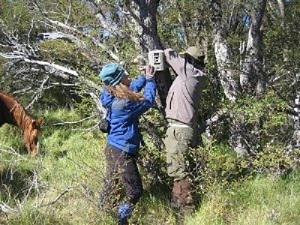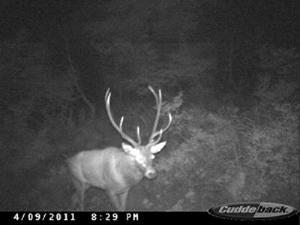Elizabeth Chang Reissig
Other projects
11 Nov 2007
Disease Risks for Native Deer Species, Associated to Exotic Ungulates Red Deer (Cervus elaphus) and Wild Boar (Sus scrofa) in Nahuel Huapi National Park, Northern Patagonia, Argentina
30 Jan 2015
Disease Risks for Native Deer Species, Associated to Exotic Ungulates in National Parks of Northern Patagonia, Argentina
The aim of the project is to identify diseases of exotic mammals in Patagonia, evaluate the risk of disease transmission from introduced species to native fauna, and generate basic information to prevent zoonosis.

The importance of wildlife diseases in exotic mammals and the risk of transmission to native fauna and people have not been yet evaluated in Argentina. In this country, red deer (Cervus elaphus) and wild boar (Sus scrofa) were introduced in the beginning of nineteenth century to provide meat and sport for hunters. It is known that exotic mammals can cause significant ecological change in native communities and are thus considered one of the biggest threats to global biodiversity. Previous data suggests that the high-densities of exotic mammals in Patagonia Argentina produce habitat loss and competition, and habitat overlap may be facilitating disease transmission from exotic to native populations.

My previous study identified several diseases of introduced exotic mammals in northern Patagonia for first time, and was helpful to establish baseline information for a future disease surveillance system. This is essential for the sustainable conservation and management of threatened native fauna, such as the huemul (Hippocamelus bisulcus) and pudu (Pudu puda). The potential introduction of infectious diseases by exotic animals is a major concern in conservation programs since they could endanger native, and often endangered, populations. Therefore, clinical screening of exotic red deer and wild boar during hunting seasons is critical to assess and monitor their health status and to highlight specific potential hazards for native fauna and local people.
Currently, periodical sampling of exotic hunter-killed red deer and wild boar are being carried out at authorized hunting sites of Nahuel Huapi National Park, Lanin National Park and neighboring sites of Los Alerces National Park. Post mortem examinations and sample collection are being performed for histopathology, serology and parasitology analysis to detect the occurrence of infectious and parasitic diseases. Farmers, hunting guides, hunters and park rangers are being encouraged to submit samples for laboratory analysis when a full necropsy cannot be performed in the field. Personnel are being trained for the proper collection and storage of samples, as well as personal hygiene and protection practices. Preventive measures are being recommended thorough talks and educational materials, and health procedures will be devised, enacted, and monitored.
In addition, we plan to evaluate whether factors such as high densities of exotic mammals, habitat loss and competition, or habitat overlap are facilitating disease transmission from exotic species to native wild populations. Understanding the ecology and the dynamics of invaders through health surveys will facilitate conservation actions for the protection of endangered native species.